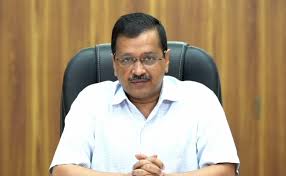AAP has appointed 22 leaders as office-bearers in states, and is focusing on poll-bound Gujarat and Himachal Pradesh.
New Delhi: Following a thumping victory in the Punjab Assembly polls, the Aam Aadmi Party (AAP) has plans to expand nationally, as claimed by many AAP insiders. Several political observers have declared unequivocally that the party’s agenda and approach must be strengthened in order to win a majority in the states. In pursuit of its national ambition, the AAP has appointed 22 leaders, who are office-bearers in different states, including Gujarat, Himachal Pradesh, Haryana, Chhattisgarh, Assam, Rajasthan, Telangana, Kerala and Punjab. The election in-charge of Chhattisgarh is Gopal Rai, Gulab Singh (Gujarat), Saurabh Bharadwaj (Haryana), Satyendra Jain (Himachal Pradesh), Vinay Mishra (Rajasthan), Somnath Bharti (Telangana). Some of the other AAP leaders are Rajesh Singh in Assam, A. Raja (Kerala), Jarnail Singh (Punjab), Sushil Gupta (Haryana), Durgesh Pathak (Himachal Pradesh), Dr Sandeep Pathak (Punjab) and so forth. Sources close to AAP have told The Sunday Guardian that the party aspires to replace the Congress. However, the party (AAP) is presently focussing on the upcoming elections in Gujarat and Himachal Pradesh. “If the party performs well in the forthcoming elections, it may be able to replace Congress. Many prominent members of Congress are not actively engaged in politics, and internal strife among Congress members has resulted in a major political crisis within the party,” a senior political analyst told this paper.
Similarly, another political analyst told this correspondent, “It would be too early to speculate on how far the AAP might replace Congress because the party needs to win a majority of states to do it. It could take a long time. AAP needs to win the majority of southern states, as well as non-BJP states such as Maharashtra, Chhattisgarh, and others. Also, winning UP is important.”
Losing Uttar Pradesh is a significant setback because the state has 403 Assembly seats and the winning party requires 202 seats to establish a government. The UP poll sets the agenda and determines the national sentiment ahead of the general elections in 2024. The BJP won 312 of the 403 seats in the 2017 UP assembly elections, while this year, the party has crossed the 270 mark. As claimed by a UP-based political observer to this correspondent, “AAP needs to develop its strategies which are suitable for the other states. Though AAP has taken several strong steps in Punjab right after winning the state, such a development agenda may not have a major impact on other states because each state has its mindset, and casteism and religion play a significant part in Uttar Pradesh.”
Unfortunately, first-time players AAP received 0.38% of the vote, which was lower than the NOTA (none of the above) option, which received 0.69% of the total votes, according to the Election Commission data. The role of casteism in the political dynamics of UP is quite evident as in Western Uttar Pradesh, the OBC communities such as Yadavs, Kurmis, and Gujjars, along with Jats, account for only 15% of the overall electorate, or 34% of the state’s total backward and Jat population. Nonetheless, they make up the majority of OBC lawmakers in the Lok Sabha and Vidhan Sabha.
While focussing on Hindutva, the winning party (BJP) also developed other new strategies to win the largest state. As reported by The Sunday Guardian, the party fielded 170 fresh faces who were recruited from the Assembly seats, which included 100 candidates, whose seats were either changed or the tickets were denied to them or their close relatives and not the 70 candidates who had contested the 2017 election but lost. Also, the party approached and represented around 44 castes and communities. The BJP fielded 105 candidates from the Other Backward Class (OBC) from 19 sub-castes, 83 Scheduled Caste (SC) candidates from 14 SC sub-castes, and 184 candidates from the unreserved category from 11 castes and communities. The party also identified and promoted 40 positive issues among the voters that complemented the “double engine” government narrative. The BJP has also retained seats in Uttrakhand, Goa and Manipur.
In Punjab, the AAP won 92 of the 117 seats. What makes the victory of AAP significantly special is that since 1977, when the state elections were held on 117 seats for the first time, the only time a single party, Congress, had won roughly 87 seats in Punjab was in 1992. The failure of Congress in Punjab exemplifies the faulty decision making within the party itself. Captain Amarinder Singh, who is now affiliated with the Punjab Lok Congress, slammed the state Congress president, Navjot Singh Sidhu, and Charanjit Singh Channi, who had succeeded him as chief minister. He blamed the defeats in Punjab, Uttrakhand, Uttar Pradesh, Goa, and Manipur on the entire Gandhi family. In the end, Congress received only 18 seats out of 117 Assembly seats.

